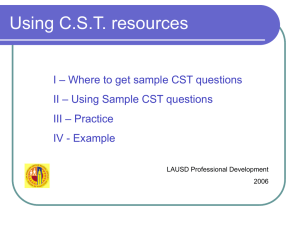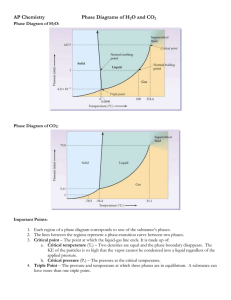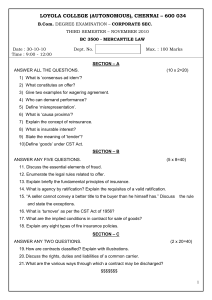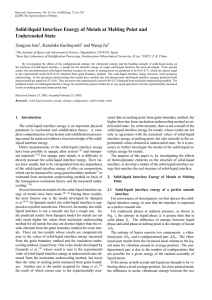Gibbs Phase Rule: f = c – p + 2 f = Intensive Degrees of freedom
advertisement
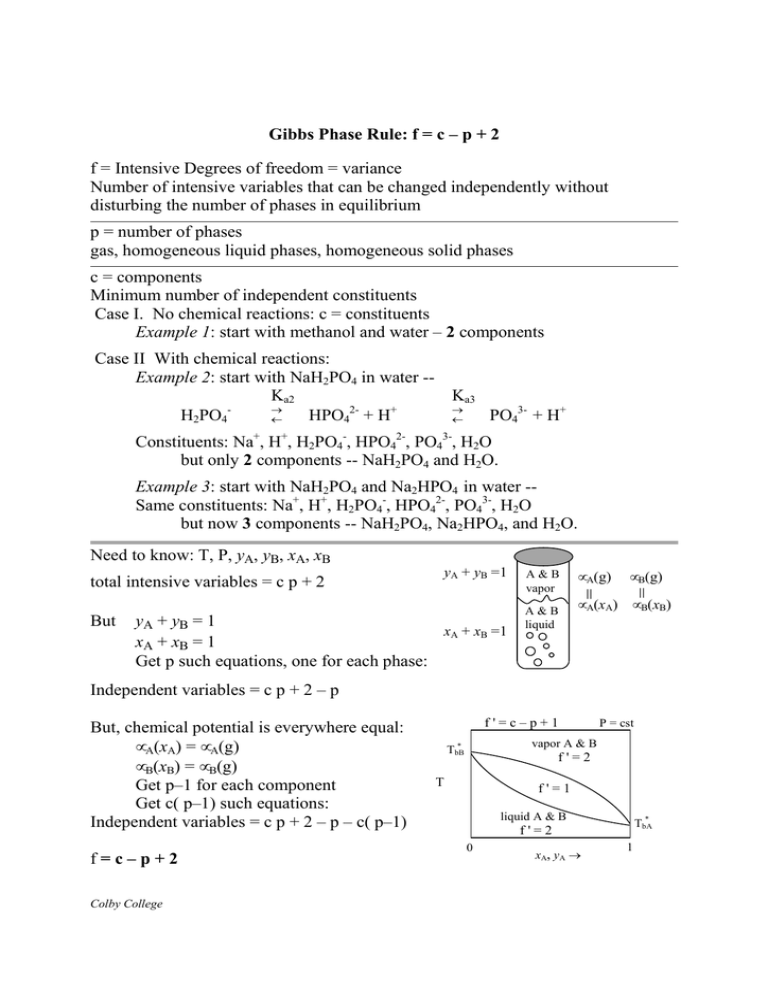
Gibbs Phase Rule: f = c – p + 2 f = Intensive Degrees of freedom = variance Number of intensive variables that can be changed independently without disturbing the number of phases in equilibrium p = number of phases gas, homogeneous liquid phases, homogeneous solid phases c = components Minimum number of independent constituents Case I. No chemical reactions: c = constituents Example 1: start with methanol and water – 2 components Case II With chemical reactions: Example 2: start with NaH2PO4 in water -Ka2 Ka3 → 2+ → H2PO4 HPO4 + H PO43- + H+ ← ← Constituents: Na+, H+, H2PO4-, HPO42-, PO43-, H2O but only 2 components -- NaH2PO4 and H2O. Example 3: start with NaH2PO4 and Na2HPO4 in water -Same constituents: Na+, H+, H2PO4-, HPO42-, PO43-, H2O but now 3 components -- NaH2PO4, Na2HPO4, and H2O. Need to know: T, P, yA, yB, xA, xB But yA + yB = 1 xA + xB =1 xA + xB = 1 Get p such equations, one for each phase: A&B vapor A&B liquid µA(g) µB(g) = yA + yB =1 = total intensive variables = c p + 2 µA(xA) µB(xB) Independent variables = c p + 2 – p But, chemical potential is everywhere equal: µA(xA) = µA(g) µB(xB) = µB(g) Get p–1 for each component Get c( p–1) such equations: Independent variables = c p + 2 – p – c( p–1) f=c–p+2 Colby College f'=c–p+1 P = cst vapor A & B * TbB f'=2 T f'=1 liquid A & B * TbA f'=2 0 xA, yA → 1 f' = c – p + 1 f "= c – p cst. P cst. T&P Binary solid-liquid Equilibrium Melting Point Variation with Composition c=2 p=3 A&B liquid liquid, pure solid A, pure solid B Solid A & Solid B Solid-liquid 2-phase region: f'=2–2+1 =1 f'=c– p+1 Eutectic: f' = 2 – 3 + 1 =0 invariant at cst P P = cst liquid A & B f ' =2 T f ' =1 liq. & solid B f ' =1 liq. & solid A solid A & solid B 0 f ' =0 xA → For NaCl in water: Eutectic -21.1 oC at 23% wt/wt giving NaCl·2H2O Add One Extensive Independent Variable for Each Phase: Gibbs energy is extensive: Degrees of freedom: D=f+p Binary Solid-Liquid at constant T & P: Solid-liquid 2-phase region: f" = 2 – 2 = 0 D" = f" + p = 0 + 2 = 2 dG = µA dnA + µB dnB dnA and dnB: totals for both phases since: µA(s) = µA(l), and µB(s) = µB(l) Colby College (doesn’t matter which phase) 1

